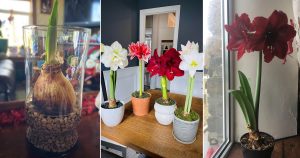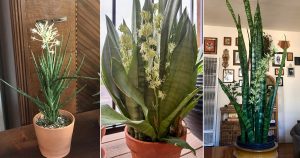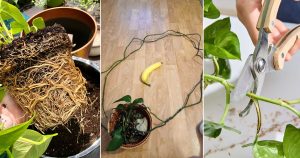The first time I composted, my husband was excited to see the organic waste from our large family put to use. “We generate enough garbage to sell compost to the neighbors,” he remarked. So far we haven’t taken it to that scale.
Some people believe composting is a messy, smelly job not suitable for balcony gardeners. In truth, it’s no messier than regular gardening and the smell is easily contained. If it really stinks you are probably doing something wrong. And on your balcony, you probably don’t have to worry about animals getting into your compost, other than your pets.
Here is the equipment I used:
- A covered container for collecting kitchen refuse, like a small garbage can.
- A large bin for holding the compost pile. It can be old and cracks are fine too, as your compost will need air. You’ll also want some holes in the bottom for drainage.
- Saucer. Keep this under the bin so your balcony will stay clean.
- Soil or sand. Soil can be of lower quality than you usually use for your plants.
- Wet organic material. Collect kitchen refuse including peels, seeds, rotten raw or cooked produce, crushed eggshells, coffee grinds, seeds, and other organic material. You can even add some strips of newspaper and the lint from your
dryer. - Don’t include animal products with the exception of crushed eggshells.
- Wet or dried leaves, branches and grass.
- Water.
This is What I Did:
To make compost you need to encourage bacterial growth. Like all living things bacteria need air, water and food. The organic material serves as the food, and bacteria are everywhere. So your main job is to make air and water available to your decomposing material.
Begin collecting kitchen refuse. Place your garbage can on the counter and instruct everyone in the house to contribute suitable material. When the container gets full, bring the contents to the balcony and empty them into the larger bin.
Once you have a few inches of kitchen material in the bin, layer with an inch or two of the garden material. Cover with a layer of soil or sand. The soil and leaves keep the smell of the kitchen refuse from being overpowering. Wet it all with a generous amount of water. Drainage is important, because you do not want the compost to be
soaking in water. There’s no need to cover the pile unless you are worried that kids or animals will get into it.
Check your compost pile every few days, adding water when necessary. Each time you add kitchen refuse, top with a layer of plant material and soil and wet the pile. Continue every few days until the bin is full.
At this point you can leave it, just keeping it moist until the compost is ready after a few weeks or months. But if you want to hurry it along, stir and turn the mixture every week or so to expose the inside of the pile to fresh air. During the early stages, while the decomposing food is still smelly, you will want to cover the pile with a new layer of soil after stirring.
The compost is done when it is all uniformly black with the texture of a rough soil. It’s fine if you can still recognize bits of seeds or shells. Mix the compost in with your potting soil and enjoy the fruits of your labor!







